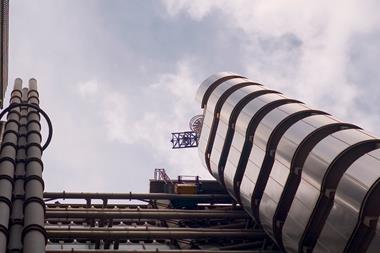Businesses need to have effective continuity plans and business interruption cover in order to cope with unexpected disasters, warns Graeme Berry
The Buncefield oil depot explosion in Hemel Hempstead last month is the most recent disaster to affect a large number of businesses. It is not the first time that an industrial plant has exploded causing widespread damage and disruption to the surrounding area.
In 2001, an explosion in a Toulouse fertiliser factory resulted in damage estimated at above £560m, and an explosion of a power plant in Teeside in the same year killed three people and caused severe damage.
Such disasters highlight the need for businesses to understand not just the risks which are under their own control, but adjacent risks as well and to ensure they have robust continuity measures in place in order to minimise their financial and collateral impact.
The chief executive of Hertfordshire Chamber of Commerce estimated that the total damage and loss to businesses as a result of the Buncefield explosion will be between £500m and £1bn.
Companies in the area suffered damage to warehouses and stock worth millions of pounds, and others were unable to make deliveries to wholesalers due to access problems at their distribution centres.
Most businesses have basic insurance policies that cover damage to their own premises and the resulting business interruption loss. However, many may not have comprehensive additional business interruption cover and will be unable to claim for losses incurred above and beyond physical harm to property.
While large companies that lost distribution centres are unlikely to fold, small and medium-sized companies may face severe cash flow difficulties in the face of a disaster such as Buncefield.
Global business
So what can companies do to ensure they are prepared for a disaster and what steps should they take once disaster has struck?
The best form of defence is preparation.
The risk of exposure to 'what if' situations beyond the control of a business has been heightened by fundamental changes in the way modern business is conducted. Modern global businesses are growing in complexity and scale and are also relying on increasing interaction with suppliers and customers, which means that a significant interruption can ricochet up and down a supply chain.
Understanding these risks, evaluating them and monitoring exposure is, or should be, a key priority for any business. Contingency plans are key to short-term business continuity and every company should have these in place.
One software and outsourcing specialist affected by the Buncefield blast has said it is recovering with minimal impact to its clients because it had strong contingency plans in place. A speedy and creative mitigation plan can save huge amounts of money.
When Primark's warehouse was destroyed in a fire at the end of last year and large quantities of stock were lost, alternative storage was quickly earmarked and the retailer had replacement goods flown over from east Asia to replenish the warehouses in time for the busy Christmas period. It was expensive, but significantly cheaper than the damage that would have been caused to the business if the retailer did not have enough stock over the busiest and most profitable time of the year.
Insurance cover for the knock-on effects of physical damage, up and down the supply chain, takes various forms. It is one of the developing areas of business interruption cover, as risk managers, brokers and underwriters respond to the demands for protection against increasing interdependence in modern business.
Contingent business interruption (CBI) insurance usually extends the standard business interruption policy to include loss of business as a result of physical damage to customers' or suppliers' premises. Cover can be in respect of specified or unspecified suppliers and can extend to suppliers of suppliers. Stand-alone, tailored CBI policies are also available.
Besides responding to physical perils such as fire, these policies can cover strikes, political risks, pollution or contamination, epidemic or disease and denial of access.
The indemnity provided would usually include loss of revenue or profits, as well as additional or increased costs of working, such as measures to mitigate the loss such as subcontracting. Contingent extra expense may extend cover to the additional costs incurred.
Trade disruption insurance (TDI) is a variation on the same theme, with cover usually specifically designed to protect a particular business against loss of profits, contractual penalties, product replacement costs and relocation costs.
Service interruption (SI) extensions add cover for a defined loss of a utility service provider (including telephones and water). Electronic media (EM) covers business interruption in the time taken to restore damaged electronic records from scratch or from last-generation back-up.
Deliveries delayed
'Hot sites', where electronic media and systems are available off-site, can be very expensive but invaluable in enabling business to continue.
Staff at more than 400 companies in the Maylands industrial estate near Buncefield were prevented from entering their premises as the fire blazed. Similarly, lorries could not reach their destinations, delaying deliveries.
However, those businesses that had 'prevention or denial of access' insurance in place would have been covered for the inability to gain access to business premises, usually because of safety issues.
When disaster strikes, businesses can follow clear steps as well as preparing for the worst. Understanding the fundamentals of the economic impact of an interruption is only possible once the normal operations of a business are analysed.
Business interruption measurement is all about the hypothetical: the art of putting a value on a company's daily operations, revenues and relationships at the very time when those operations are at risk.
The skills of accountants,particularly forensic accountants, are increasingly being used to help resolve business interruption claims, using the analytical tools more commonly associated with traditional disciplines like profit forecasting.
Getting into a business and becoming familiar with the problem quickly can often help mitigate costly delays and disputes, especially when there are large volumes of data to be managed.
A forensic accountant working in tandem with industry experts can get under the skin of a company in order to ensure the business functions normally as soon as possible, thereby limiting the cost of the interruption to the business in the long term.
All businesses, large or small, should be aware of the risks to which they are exposed. Companies should ask their brokers for risk management advice or to look for insurers that offer risk management advice as standard.
They should seek the necessary insurance cover and do everything they can to make sure that their insurer responds quickly if a claim has to be made and that the business can be up and running with the minimum disruption.
Finally, companies should be ready to call in the necessary experts including forensic accountants to measure the potential loss, establish contingency plans and implement disaster recovery plans as soon as disaster strikes. IT
' Graeme Berry is director of insurance claims services at PricewaterhouseCoopers Forensic Services.
Hosted by comedian and actor Tom Allen, 34 Gold, 23 Silver and 22 Bronze awards were handed out across an amazing 34 categories recognising brilliance and innovation right across the breadth of UK general insurance.













































